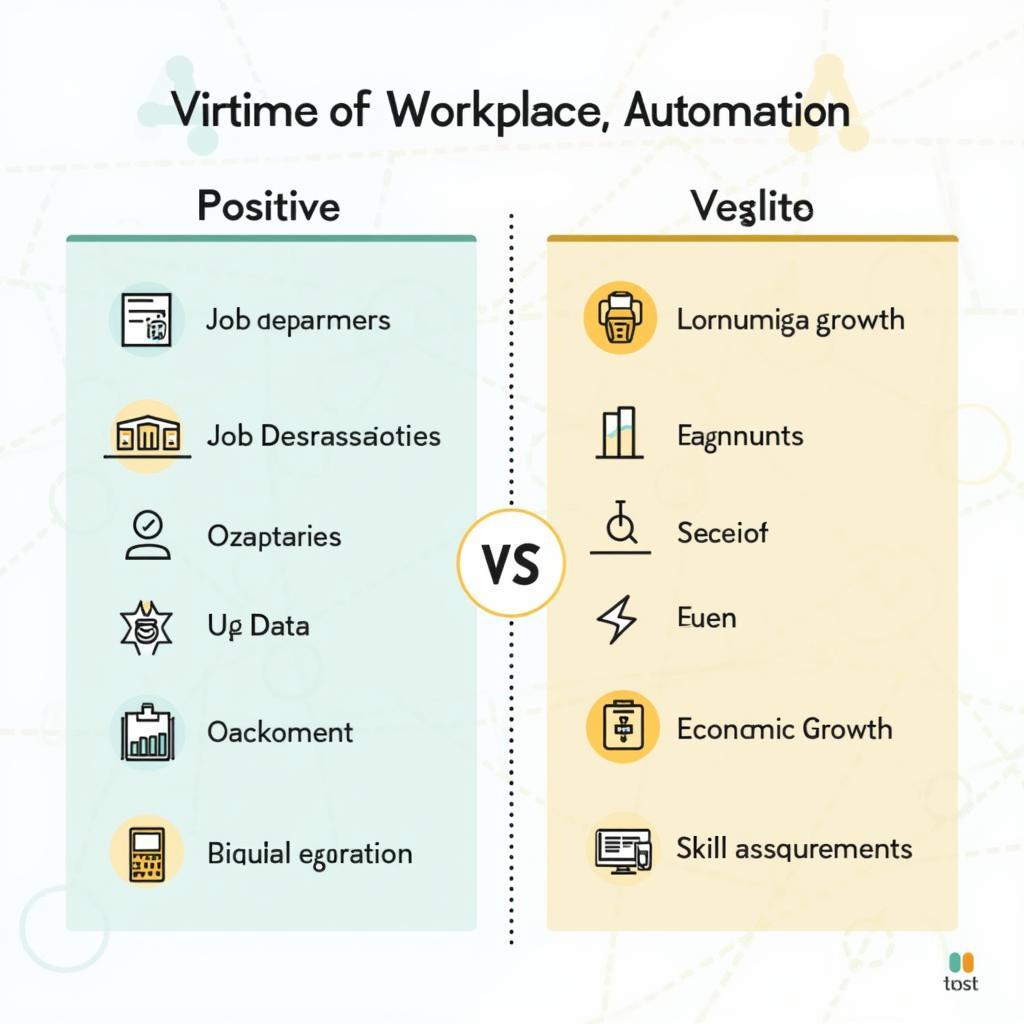Workplace automation has become an increasingly common topic in IELTS Writing Task 2, appearing in various forms across recent test versions. This technological evolution has sparked significant debate about its impacts on employment and workplace dynamics, making it a highly relevant subject for IELTS candidates. Recent analysis of past papers shows this theme appearing approximately once every 3-4 months, particularly in countries with rapidly developing technology sectors like impact of AI on workforce productivity.
Some people believe that workplace automation and artificial intelligence will lead to job losses and economic instability. Others argue that these technologies create new opportunities and economic growth. Discuss both views and give your opinion.
Analysis of the Question
This question requires candidates to:
- Examine both positive and negative perspectives on workplace automation
- Provide balanced discussion of economic impacts
- Present and justify a personal viewpoint
- Structure response using a clear introduction, body paragraphs, and conclusion

Sample Essay 1 (Band 8.5)
The increasing integration of automation and artificial intelligence in workplaces has generated considerable debate about its economic implications. While some fear these technologies could trigger widespread unemployment, others see them as catalysts for economic advancement. In my view, while short-term disruptions are inevitable, the long-term benefits of workplace automation outweigh its drawbacks.
Those concerned about automation’s negative impacts make valid points about immediate job displacement. When companies implement automated systems, certain positions, particularly in manufacturing and data processing, become redundant. This transformation, similar to the effects of automation on low-income job markets, can lead to temporary unemployment and economic hardship for affected workers.
However, proponents of workplace automation present compelling evidence of its economic benefits. Automation typically creates new job categories and industries, from robot maintenance specialists to AI ethics consultants. Furthermore, increased productivity through automation often leads to business expansion, generating additional employment opportunities. Studies have shown that companies implementing automation often experience growth that enables them to hire more workers in different capacities.
In developing economies, the impact is particularly noteworthy, as discussed in research about how does automation influence job opportunities in developing nations. While traditional jobs may decline, new opportunities emerge in technology-related sectors, creating a more diverse and resilient economy. This transformation often results in higher-skilled, better-paying positions that contribute to overall economic growth.
In conclusion, although workplace automation poses initial challenges through job displacement, its potential to create new opportunities and drive economic growth makes it a net positive force. The key lies in managing this transition effectively through retraining programs and adaptive economic policies.
Sample Essay 2 (Band 6.5)
Nowadays, many people worry about automation and AI in workplaces. Some think it will cause many people to lose their jobs, while others believe it creates new chances for workers. I will discuss both sides and give my opinion.
On the negative side, automation can make some jobs disappear. When machines do the work, companies don’t need as many workers. For example, in factories, robots now do many jobs that people used to do. This means some workers lose their jobs and might have trouble finding new ones.
However, there are also good things about automation. It can make new types of jobs that didn’t exist before. For instance, companies need people to fix and control the machines. Also, when businesses save money by using machines, they can grow bigger and hire more people for different jobs.
I think automation is generally good for the economy, even though it can cause problems at first. The important thing is to help workers learn new skills so they can find different jobs. This way, everyone can benefit from new technology.
Key Vocabulary
- Integration (n) /ˌɪntɪˈɡreɪʃn/ – the process of combining things
- Redundant (adj) /rɪˈdʌndənt/ – no longer needed or useful
- Catalysts (n) /ˈkætəlɪsts/ – things that cause activity between two or more persons or forces
- Implementation (n) /ˌɪmplɪmenˈteɪʃn/ – the process of putting a plan into action
- Resilient (adj) /rɪˈzɪliənt/ – able to recover quickly from difficulties
Consider practicing with these additional potential topics related to workplace automation:
- The role of automation in healthcare services
- Impact of automation on traditional skilled trades
- Automation’s influence on work-life balance
- Educational requirements in an automated workplace
Feel free to share your practice essays in the comments section for feedback and discussion.